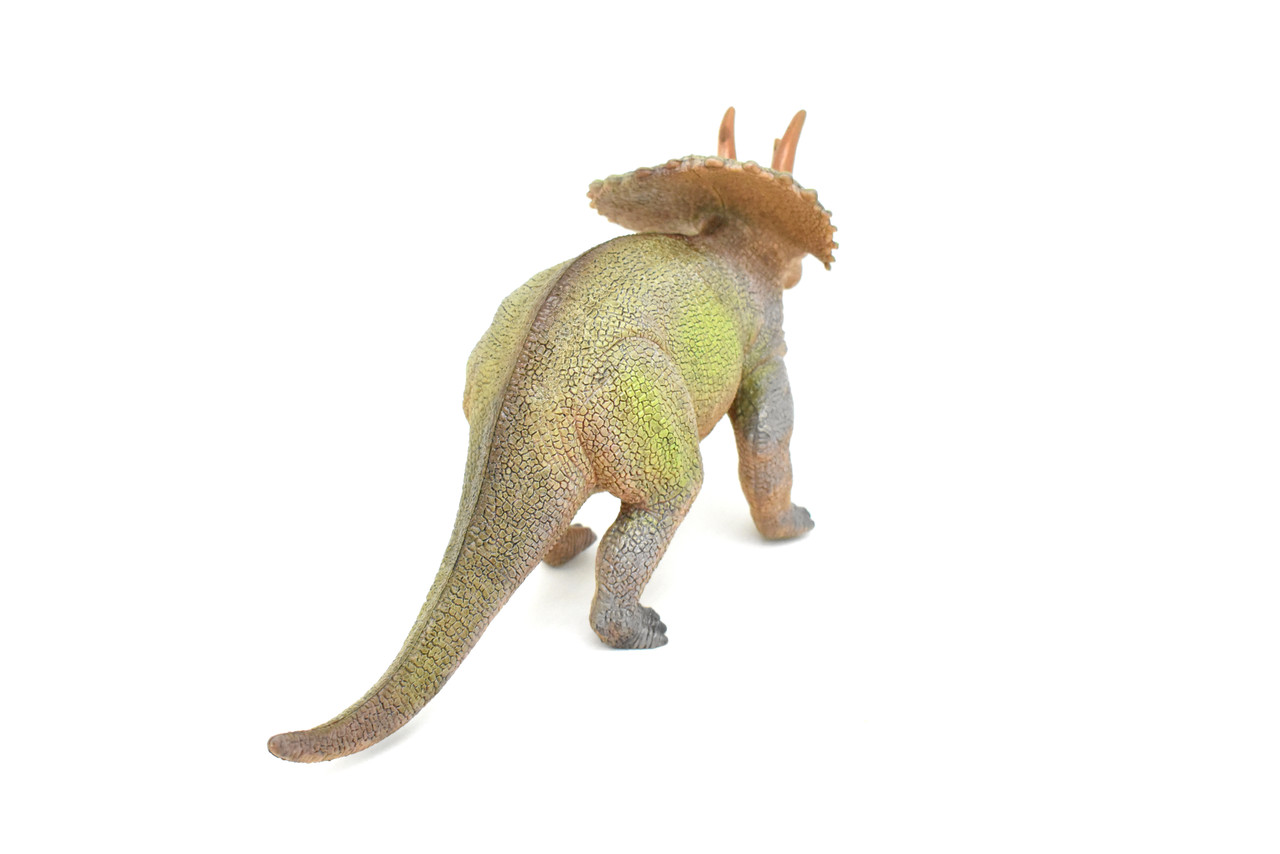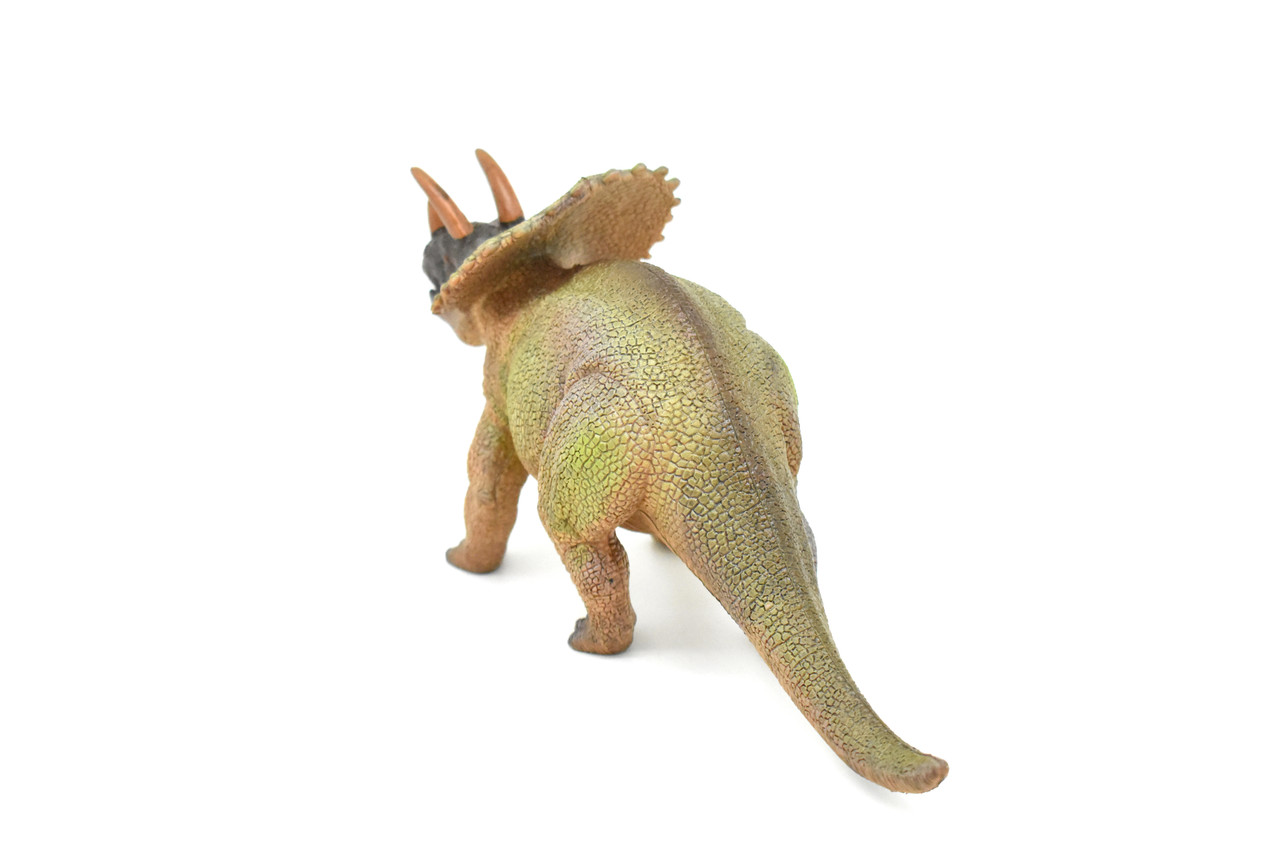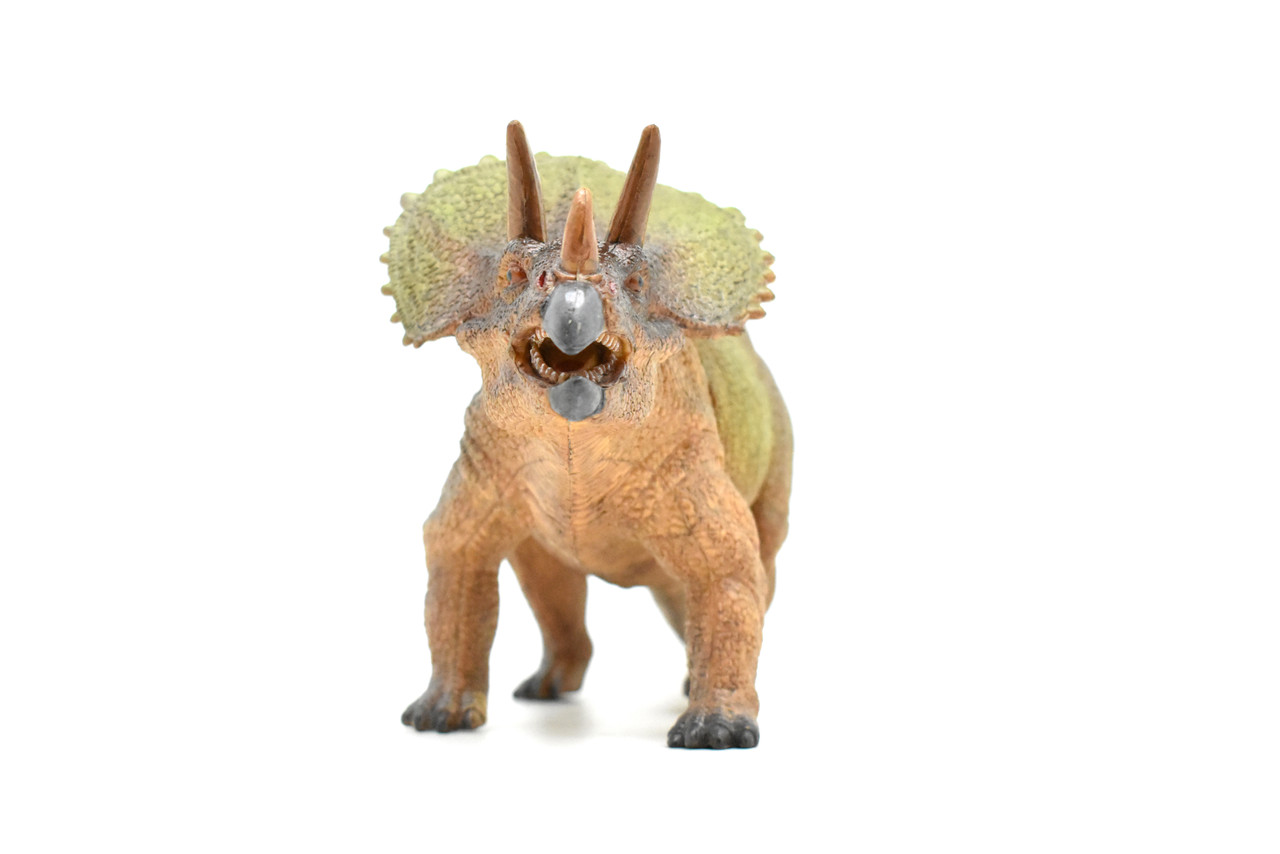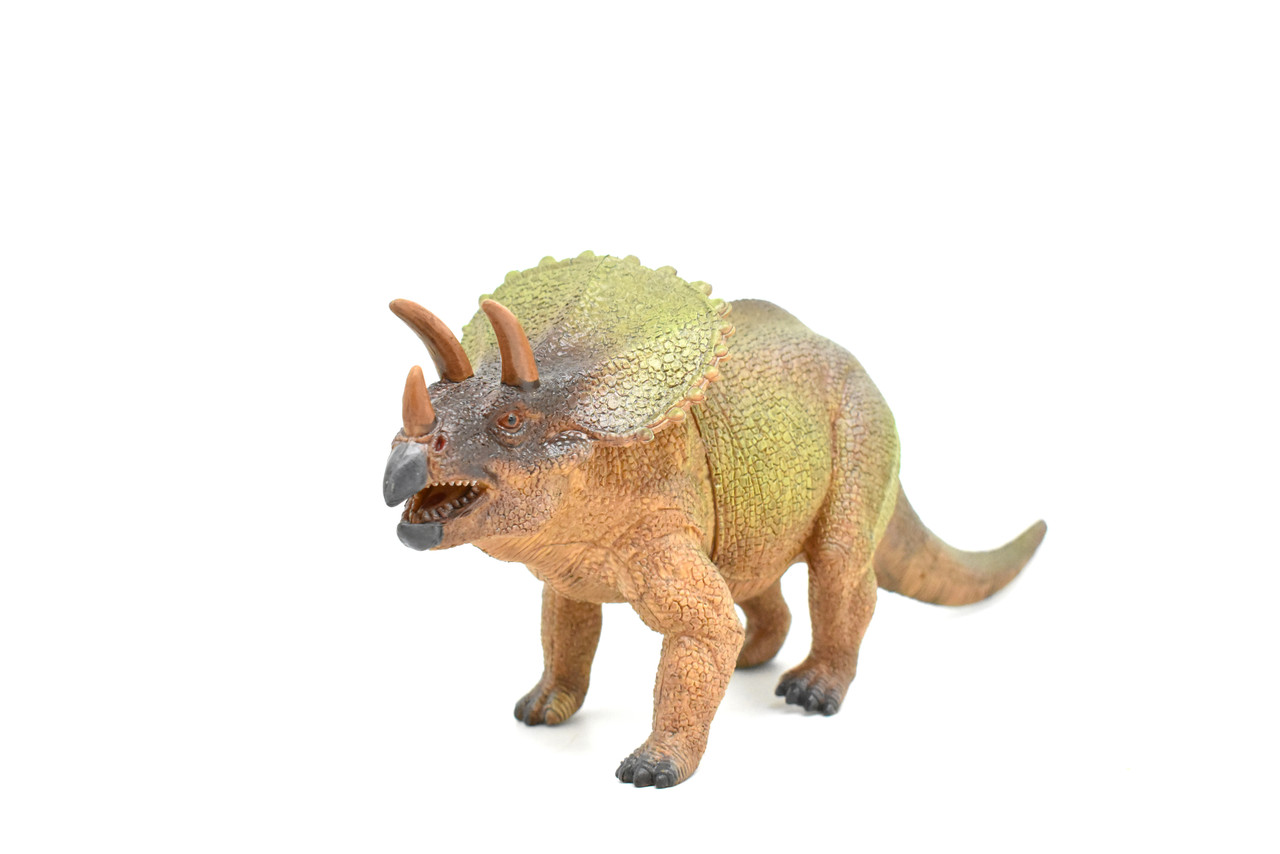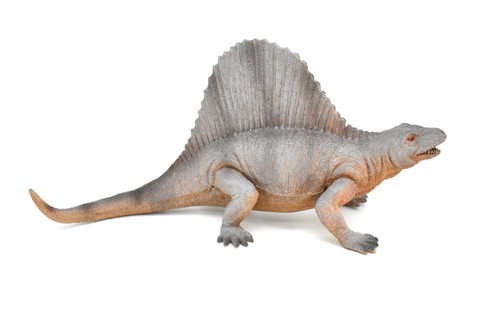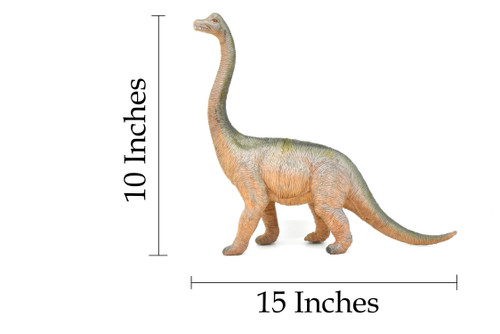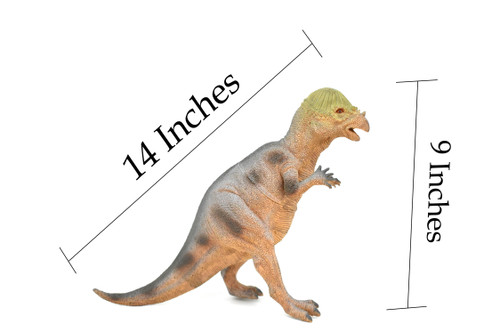Product Description
Triceratops, (genus Triceratops), large quadrupedal plant-eating ceratopsian dinosaur that had a frill of bone at the back of its skull and three prominent horns. Fossils of “three-horned face,” as its Latin name is usually translated, date to the final 3 million years of the Cretaceous Period (145.5 million to 65.5 million years ago), making it one of the last of the non-avian dinosaurs to have evolved. Paleontologists estimate that the body length of Triceratops approached 9 meters (30 feet). The largest adults are thought to have weighed 5,450–7,260 kg (approximately 12,000–16,000 pounds).
Triceratops is the most commonly recovered dinosaur in the uppermost Cretaceous deposits of western North America, and its remains have been found throughout the region. Although many other large ceratopsians have been discovered in massive bone beds representing numerous individuals, Triceratops has only rarely been found in groups of three or more individuals. When the first specimen was discovered in 1887, it was mistaken for a gigantic species of extinct bison. Only later did further discoveries reveal that it was actually a horned dinosaur. Triceratops was officially named and described by American paleontologist O.C. Marsh in 1889. At present there are two recognized species: T. horridus and T. prorsus.
Triceratops possessed a gigantic skull, and some individuals had skulls nearly 3 meters (about 10 feet) long, which would place them among the largest of all terrestrial animals. In addition to its three conspicuous horns, which were placed above each eye and on the snout, it possessed numerous small spikes (epoccipitals) that bordered the margin of the expanded frill of bone at the back of the skull. There were as many as 19–26 epoccipitals on the frill. Triceratops also possessed smaller hornlike projections on the jugal bones (cheekbones). The upper and lower jaws were lined with stacked columns of teeth, which appear to have been specialized for shearing. The front of the mouth formed a beak, which may have been used to crop vegetation. In addition, most of the skull was covered by indentations made by blood vessels; similar indentations are found under the keratinous beaks of living birds. This suggests that the dinosaur’s entire head, aside from the cheeks and the area around the nostrils, was covered in keratin while it was alive. In many living birds, keratin is very colorful, a fact that suggests that the skulls of Triceratops may have been very colourful as well.
Collectible Wildlife Gifts is the market leader in providing high quality, realistic Wildlife Designs of all types! Every one of our items is heavily inspected for quality craftsmanship and authenticity. Our products make great gifts for your family and friends! Additionally, our lifelike animal figurines and plush make for great displays and educational sets. We are happy to serve our wide range of clientele from parents to educators, gift shop owners and many more!
Our team works hard to ensure you get a great Designs. All products from Collectible Wildlife Gifts are checked for quality to ensure you receive the order in perfect condition.
From plush sharks to educational animal growths cycle we offer the perfect toy or gift for any occasion. Our products have been ordered by educational groups, aquariums, zoos, and more.
Great customer service is guaranteed when you order from Collectible Wildlife Gifts, we want you to love your toy and have a simple ordering process, we are happy to assist with inquiries!




